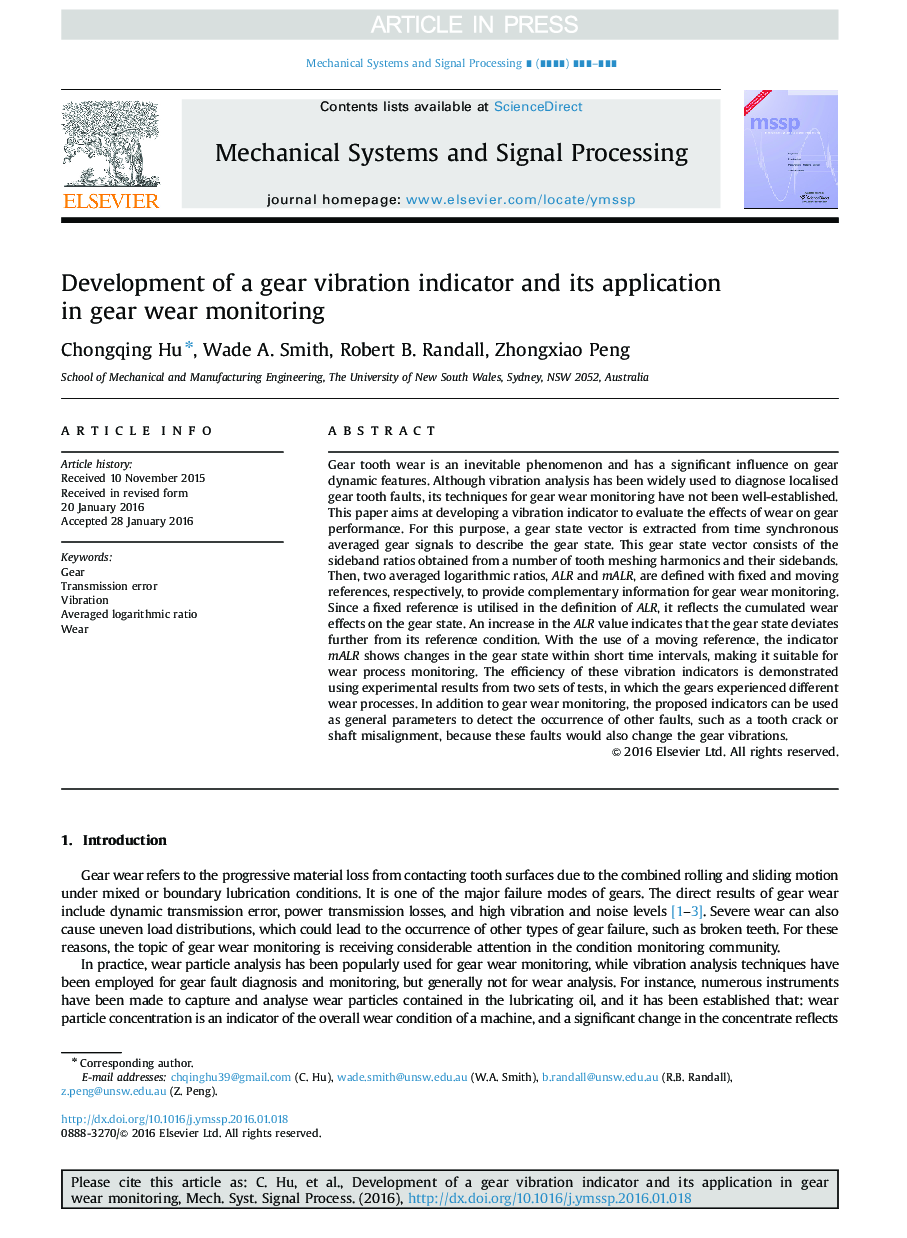| Article ID | Journal | Published Year | Pages | File Type |
|---|---|---|---|---|
| 6955125 | Mechanical Systems and Signal Processing | 2016 | 18 Pages |
Abstract
Gear tooth wear is an inevitable phenomenon and has a significant influence on gear dynamic features. Although vibration analysis has been widely used to diagnose localised gear tooth faults, its techniques for gear wear monitoring have not been well-established. This paper aims at developing a vibration indicator to evaluate the effects of wear on gear performance. For this purpose, a gear state vector is extracted from time synchronous averaged gear signals to describe the gear state. This gear state vector consists of the sideband ratios obtained from a number of tooth meshing harmonics and their sidebands. Then, two averaged logarithmic ratios, ALR and mALR, are defined with fixed and moving references, respectively, to provide complementary information for gear wear monitoring. Since a fixed reference is utilised in the definition of ALR, it reflects the cumulated wear effects on the gear state. An increase in the ALR value indicates that the gear state deviates further from its reference condition. With the use of a moving reference, the indicator mALR shows changes in the gear state within short time intervals, making it suitable for wear process monitoring. The efficiency of these vibration indicators is demonstrated using experimental results from two sets of tests, in which the gears experienced different wear processes. In addition to gear wear monitoring, the proposed indicators can be used as general parameters to detect the occurrence of other faults, such as a tooth crack or shaft misalignment, because these faults would also change the gear vibrations.
Keywords
Related Topics
Physical Sciences and Engineering
Computer Science
Signal Processing
Authors
Chongqing Hu, Wade A. Smith, Robert B. Randall, Zhongxiao Peng,
